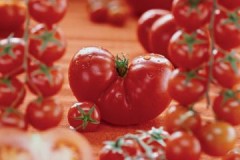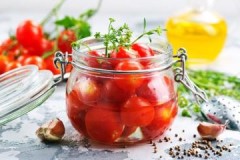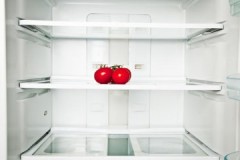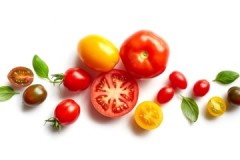 Tomatoes are a sought-after and popular vegetable that is actively used in cooking.
Tomatoes are a sought-after and popular vegetable that is actively used in cooking.
Being perishable, tomatoes must be stored correctly, taking into account all the features. Knowing how to prepare vegetables for future use for long-term storage will also be useful.
We’ll tell you in the article how to properly store tomatoes for how long in an apartment, why you can’t keep them in the refrigerator for a long time, and what to spray them with before storing them.
Content
How long can it be stored?
The duration of preservation of the tomato harvest depends on the initial condition of the vegetable and its type. To keep them fresh, tomatoes are usually not washed. If there are heavily soiled areas, wiping with a soft cloth without any effort is acceptable.
If vegetables are placed in a cool place, supplies can be kept fresh for an average of 14 days.. An alternative storage option is freezing and canning. Specially bred tomato varieties are intended for long-term storage, for example, Long Keeper, Giraffe and others.
Places and methods
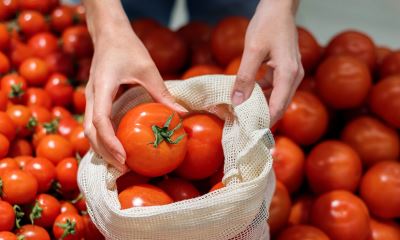 The optimal place to store harvested tomatoes is an equipped basement or cellar.
The optimal place to store harvested tomatoes is an equipped basement or cellar.
A balcony and storage room can also be used, but only if all the necessary conditions are provided for them. Vegetables can also be kept in the refrigerator if free space allows.
Rooms where the temperature is too high are definitely not suitable for keeping tomatoes., conditions are constantly changing, and where sunlight hits vegetable supplies. To extend the storage time of the crop, additional techniques can be used - special processing, wrapping in paper, etc.
Whatever place is chosen for storing tomatoes, vegetables must be periodically inspected, discarding damaged ones.
Conditions
Compliance with the storage conditions of tomatoes will help preserve them throughout the entire stipulated storage period.
The basic rules include:
- Being in the dark.
- Maintaining temperature conditions within +12-14?C. It is possible to keep it at a lower temperature, about +5-7? C.
- Relative humidity should be around 80%.
- Good air exchange.
Fresh tomatoes
It is possible to extend the storage time of tomatoes if you use some simple techniques.
In the bank
In order to increase the storage time of fresh tomatoes, you can use glass jars. You will need clean, dry containers and mustard powder.
Procedure:
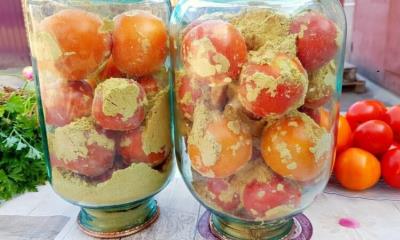 Choose small, firm, ripe tomatoes that are not damaged.
Choose small, firm, ripe tomatoes that are not damaged.- Wash and dry the vegetables.
- Sterilize the prepared jars.
- Add 2 tablespoons of mustard powder to each.
- Place a layer of fruit.
- Alternate sprinkling with powder and layers of tomatoes so that there are about 7 spoons per three-liter jar.
- Roll up the jar and place in a cool, dark place.
You can use jars of any convenient size - 1, 2 or 3 liters.
In a refrigerator
In order to store tomatoes in the refrigerator, you need to take care of their packaging. A tightly tied plastic bag is not suitable for this purpose., since this creates condensation and accelerates the deterioration of the product. If no other packaging option is available, holes can be made in the polyethylene for better ventilation.
Keeping tomatoes in the refrigerator for a long time can lead to a partial deterioration in taste and weakening of the aroma.
In the freezer
To extend the shelf life of tomatoes, they can be frozen. It is better to give preference to varieties that retain their shape well. Dense fruits without damage are selected.
Tomatoes can be pre-processed. If required, they are beaten with a blender, cut into pieces, blanched, etc. After pre-treatment, the workpiece is divided into portions, which are frozen separately in individual packages.
Depending on the chosen method, these may be:
- ice trays;
- plastic containers;
- packages, etc.
After packaging, the tomatoes are placed in the freezer. The temperature in the freezer should not be higher than -18? C in order to store tomatoes in winter.
If you plan to prepare pieces, then pre-cut them should be dried on a paper towel so as to remove excess moisture.Read about storing tomatoes in the freezer here.
Ripe fruits
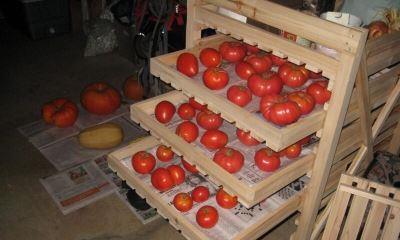 It is better not to store ripe, fully ripened tomatoes fresh for a long time. The optimal temperature for them is not high, up to +10? C.
It is better not to store ripe, fully ripened tomatoes fresh for a long time. The optimal temperature for them is not high, up to +10? C.
It is better to keep them in unheated dark rooms - basements, garages, etc. Additionally, for better preservation, each fruit can be treated with a weak solution of potassium permanganate.
It is better and more convenient to store tomatoes in plastic or wooden boxes covered with paper or straw. The fruits are laid out in one layer and sprinkled with sawdust or straw.
When you need to extend the storage time of ripe tomatoes, methods such as:
- storage in salt,
- in mustard
- freezing, etc.
If plastic boxes are chosen for storage, they must have a sufficient number of through holes to ensure ventilation.
Greens
Green, not yet ripened tomatoes should be stored at temperatures of +12-14? C. In autumn, the harvest can be placed in the cellar or garage. The room should be cool, with good ventilation. As tomatoes ripen, they need to be selected.
Details - in this article.
To ripen
If tomatoes are picked from the garden before they turn red, the question often arises of how to stimulate their ripening and prevent them from spoiling. Collected tomatoes are freed from leaves and stems. Vegetables are sorted, eliminating spoiled specimens.
One of the most convenient storage methods is in boxes. Green tomatoes can be laid out in 2-3 layers, alternating with sawdust. This will avoid condensation and reduce the likelihood of damage. In this form, the boxes are placed in outbuildings or placed in a storage room.
The air temperature at the storage location must be at least 20? C. The higher it is, the faster the ripening will take place. If it is not possible to organize storage in boxes, it is possible to cover wooden pallets with fabric and pour the crop on them. Storage space can be organized even in an apartment, for example, under the bed.
Additionally, to speed up the ripening of tomatoes can be placed near the following ethylene-emitting products:
- apples;
- bananas;
- pears.
In the old days, in villages, unripe tomatoes were stored in felt boots, sorted through every couple of days.
Do I need to treat late blight and with what?
Tomatoes are a nightshade crop susceptible to late blight. This is a common fungal disease that is very difficult to resist..
One simple way to preserve at least part of the harvest is to use hot water. Despite its simplicity, the method is quite effective - it allows you to remove the fungus from the surface of the collected fruits. Unfortunately, this option will not help with internal damage to the fruit.
 Processing order:
Processing order:
- Rinse the collected tomatoes in running water.
- Heat the water to 60? C.
- Place the tomatoes in a container of hot water for 2 minutes.
- Prepare a second container with cold water.
- Remove the vegetable and cool by transferring it to another container filled with cold water.
- Dry the tomatoes.
In addition to this method, there are others used by farmers. But you need to take into account that after this treatment, tomatoes are no longer stored for a very long time.You should not heat the water higher than 60? C, as the fruits cannot be stored for a long time.
Can it be washed before storing?
Before long-term storage, vegetables may or may not be washed. Each approach has its own strengths and weaknesses. If the vegetables are not too dirty, dry cleaning is acceptable from clods of earth with rags.
When washed, a protective film is removed from the surface of the vegetable, which helps the product to be stored well and maintain freshness. You also need to take into account that moisture falling on the surface promotes rotting and can cause the vegetable to become soft. On the other hand, washing makes it possible to eliminate bacteria from the surface of the tomato.
Processed vegetables
To preserve the harvest, tomatoes can be processed, canned or frozen.
Available methods include:
- pouring vegetable oil over the tomatoes placed in the container;
- pouring vegetables with a solution of 8 parts water, 1 part vinegar and salt;
- content in mustard;
- being in a vacuum;
- freezing, etc.
When storing tomatoes, it is desirable to maintain the most stable conditions possible.
Sun-dried (dried)
Drying tomatoes is one way to preserve the crop for several months. This preparation will find its application when preparing a large number of dishes and snacks.
No oil and no refrigerator
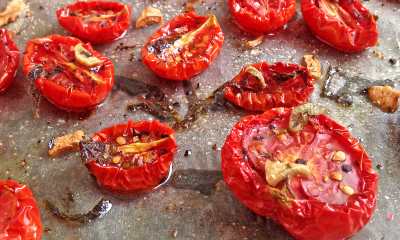 Well-dried tomato fruits can be stored in various ways.. If it is necessary to keep the product dry, without placing it in the refrigerator and using oil, it is recommended to use paper bags or bags made of natural fabric.
Well-dried tomato fruits can be stored in various ways.. If it is necessary to keep the product dry, without placing it in the refrigerator and using oil, it is recommended to use paper bags or bags made of natural fabric.
Dried in the sun or in another way, the tomatoes are transferred to prepared packaging and placed in a cool, well-ventilated and dark place. It is very important to provide protection from insects.
The maximum storage period for tomatoes prepared in this way is up to 8 months. However, professional chefs recommend not storing dried vegetables for so long, but finding a use for them in the first 3-4 months. Methods for storing sun-dried tomatoes without a refrigerator are discussed in this article.
In oil
Storing sun-dried tomatoes in oil is a classic of Mediterranean cooking. Ideally, high-quality olive oil is selected for these purposes., which is used for drying. Additionally, herbs can be added to the jars to improve the taste of the product.
In the freezer
Sun-dried tomatoes can last quite a long time in the freezer. If possible, it is better to use vacuum bags as packaging. But it should be taken into account that the longer it is frozen, the greater the loss of taste will be. Read about storing sun-dried tomatoes in the freezer Here.
Seeds
Collected tomato seeds must be properly stored in order to be able to use them next year.
The following recommendations may be helpful:
- It is better to keep the seeds in glass jars with a lid. You can also use small paper bags if there is little planting material.
- Packages of seeds should be signed, indicating the variety and date of collection.
- To keep seeds you need to choose dark and dry places.
- The temperature in the place of detention should be 6-12? C.
- Air humidity in the storage area should be about 55%.
Even if all the rules are followed, during long-term, long-term storage of planting material, its germination rate will decrease. The future harvest will largely depend on the quality of planting material.
Conclusion
The harvested tomato crop can be stored in various ways. Using fresh storage, freezing, canning, and drying, you can diversify the table even in winter.

